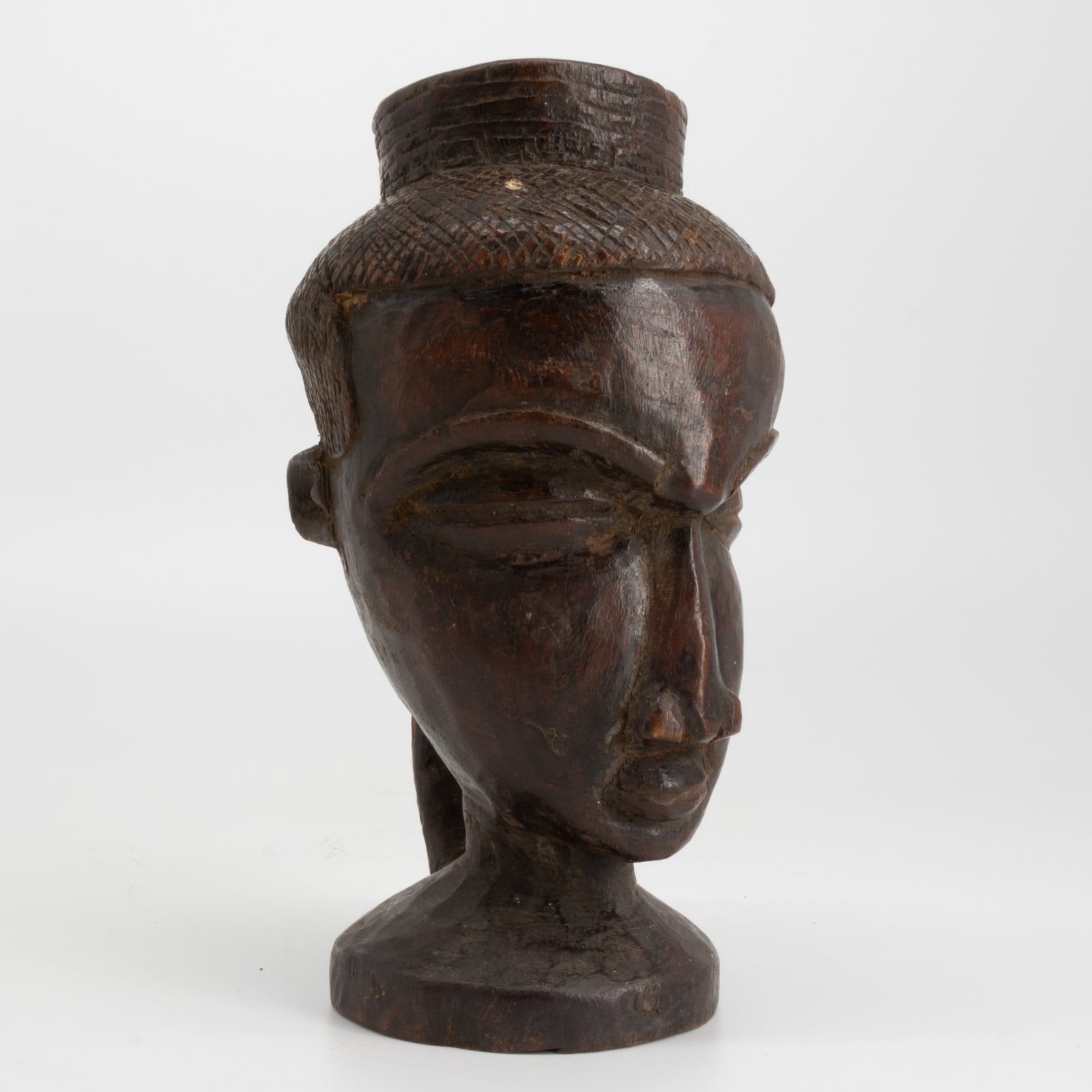Kuba Palm Wine Cup, 20th century CE
Wood
height 19.3 cm
height 7 5/8 in
height 7 5/8 in
ES.8731
The Kuba Kingdom, also known as the Kingdom of the Bakuba, is a conglomerate of several smaller chiefdoms which was formed in the 17th century in the centre of what...
The Kuba Kingdom, also known as the Kingdom of the Bakuba, is a conglomerate of several smaller chiefdoms which was formed in the 17th century in the centre of what is now the Democratic Republic of the Congo. It reached its peak during the 19th century, before the arrival of Europeans to the area (although it still exists today). It was founded in 1625 by Shyaam a-Mbul a Ngoong, who came from outside the area and united several principalities under his leadership. The government was controlled by a king (nyim) who attended a court council with representatives from all of the Kuba subgroups. As well as elected political offices, the kingdom also had a judicial system, taxation, a police force, and a military. It gained wealth through the adoption of advanced techniques from neighbouring peoples, as well as the cultivation of New World crops such as maize and tobacco. The wealth of the kingdom allowed for the development of a distinctive artistic tradition because of the desire of the elites to commission artworks that could display their power. Types of objects frequently seen include embroidered raffia textiles, headdresses, masks, ndop (sculptures representing Kuba kings), cosmetic boxes, and carved palm wine drinking cups. Palm wine, made from the sap of palm trees, is a popular beverage among the Kuba people. Highly decorated vessels became common as a way for elite individuals to compete with each other, as offering wine to friends in an impressive cup was a way of showing their wealth and status.
This cup takes the form of a human head, with a handle connected to the base upon which it rests and to the back of the head. The large wide eyes, which appear to be closed, dominate the face. Below them, a long straight nose extends down to a small mouth, placed low on the chin. The expression appears peaceful, although a furrowed brow adds some tension to the face. The hairline is strongly delineated, and the texture of the hair is represented by a cross-hatched pattern. The tall rim which emerges from a hole in the top of the head adds to the practicality of the cup for drinking. This is a beautiful example of an object that held great importance within the culture of the Kuba Kingdom.
This cup takes the form of a human head, with a handle connected to the base upon which it rests and to the back of the head. The large wide eyes, which appear to be closed, dominate the face. Below them, a long straight nose extends down to a small mouth, placed low on the chin. The expression appears peaceful, although a furrowed brow adds some tension to the face. The hairline is strongly delineated, and the texture of the hair is represented by a cross-hatched pattern. The tall rim which emerges from a hole in the top of the head adds to the practicality of the cup for drinking. This is a beautiful example of an object that held great importance within the culture of the Kuba Kingdom.
